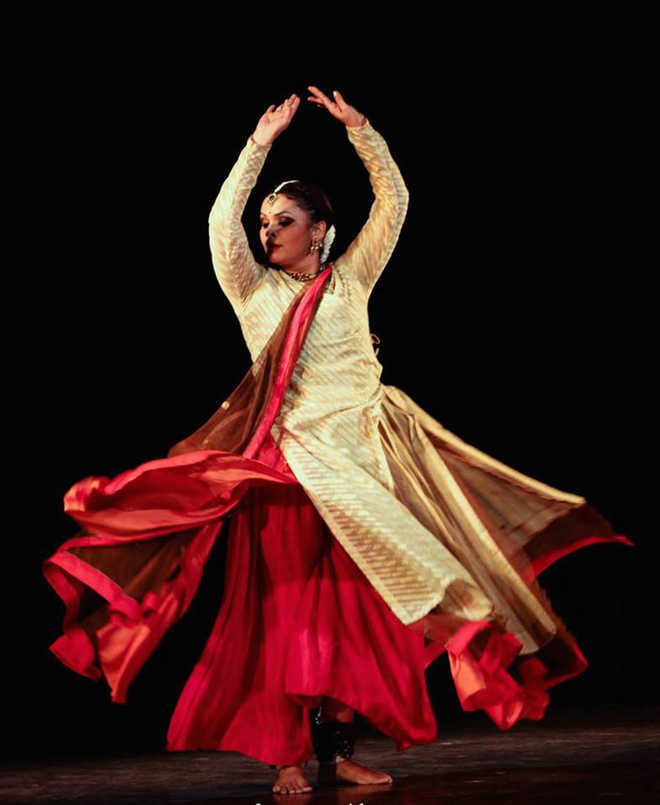Stories crafted in clothes
Manisha Gangahar
The purpose and aesthetics go hand in hand when it comes to costume designing, says textile revivalist and designer Sandhya Raman
Some call dance the supreme manifestation of physical contouring in action, while others find it a profoundly attractive presentation of deep human expressions, yet many scorn at it as something simply redundant and a few dismiss it as merely a wanton jig. The world marks April 29 every year to celebrate it, but Sandhya Raman makes it more alive and thoroughly occult every single day that she is at work.
No, she isn’t a dancer or a choreographer. She indulges in the dance form through her designing of specialised costumes for different dance forms, both ancient and modern. “I don’t just enjoy dance, I strongly relate to it, for it’s an extension of my dreams,” explains costume designer and textile revivalist Raman.
An alumnus of National Institute of Design, Ahmedabad, Raman’s career spans over 25 years. But why limit herself to dance, and that too classical? Why not take her creativity to films? Raman, perhaps a hundredth time, explains her reasons: “For me, there is much soul-searching in a dance form, there is enigmatic intensity and depth in the concept. It is live and hence quite challenging and gratifying.”
A journey that began with the international Battery Dance Company of New York, interestingly went on in all directions — Natya Dance Theatre, Chicago, Bharatkala Natya Academy, Atlanta, and Sampradaya Dance Creations, Canada. Her collaborative efforts to dress up a variety of classical dance performances have been rather prolific. In the process, she got opportunities to work on the projects that have involved a spectrum of renowned artistes and established names like Sonal Mansingh, Mallika Sarabhai, Leela Samson, Madhavi Mudgal, Anita Ratnam, Geeta Chandan and also young dancing artistes such as Anwesha Mahanta, Ragini Chandrasekhar, Sneha Chakradha, Namrata Pamnani...
Ask her if working with these biggies required some extra skill, and she gives a smile, without giving away much, but concedes: “It is indeed challenging to convince the dancer. While younger ones are more open to experimentation, it calls for a stronger persuasion with veterans and senior performers.” Raman insists that the purpose and aesthetics go hand in hand as far as costume designing is concerned — “the harmony is essential”— and the approach cannot be linear for achieving a composite goal of style, innovation and functional success. “Costume carries a pertinent visual communication, it offers an impact, something intense and indelible that the audience would carry along even after the performance is over.”
Designing costumes is being at the edge of creativity. Nevertheless, it equally involves the preservation of cherished past specialisations. “Costumes need to be recognised by everybody.” Negotiations, hard as they are, perturb Raman. “I do a fair price, keeping in mind that the workers are well taken care of.” This is important if the traditional art and craft has to be kept alive. “How do you inspire the next generation when it is not a well-paid job?”
As costumes of performing arts like dance have high usage, durability is definitely a crucial part of the designing exercise. “A 40-45 minutes of performance and repeated ones would mean that the costume is soaked in sweat, it is swirled around and roughly pushed. So, besides providing the charm of cuts, the elegance of silhouettes and the richness of fabric, a lot of attention is further required to make the dress comfortable, durable and user-friendly,” contends Raman.
Yet another dimension to her creativity is her sensitivity towards social responsibility— working for the people. She is actively involved in income generation and design and skill upgradation programmes in different Indian states, including Punjab and Uttaranchal. She also tries to use lesser-known fabrics, natural dyes and traditional motifs while working with tribes like Apatani and Nyishi. Her endeavours have certainly created awareness regarding the concept of costume designing, in all its dimensions, but more importantly Raman has erased a few misconceptions — her designs, costumes and apparels are a proof that Indian taste on stage is not at all garish and loud, it can be as subtle and yet impressive as you want. “We need to stop being callous about costumes,” she says with a positive nod.









